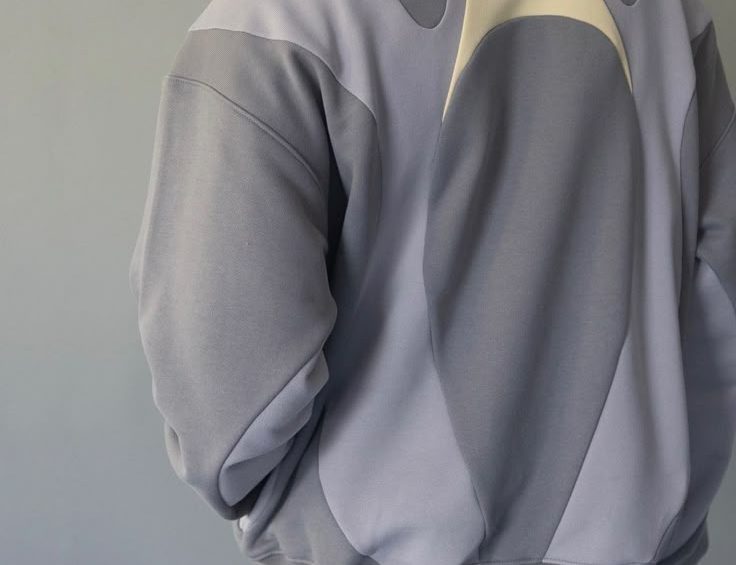Few articles of clothing possess the cultural influence, versatility, and enduring popularity that the hoodie commands. Once relegated to utilitarian use and casual wear, it has ascended to become a universal symbol of comfort, rebellion, and individuality. In 2025, hoodies encapsulate far more than warmth and ease—they represent technical advancement, conscious consumerism, and cutting-edge fashion. This comprehensive guide delves into the multifaceted world of hoodies today, unveiling the transformative trends, groundbreaking materials, and imaginative designs that define the current era.
The Evolution of the Hoodie: From Workwear to Fashion Icon
Tracing the hoodie’s journey offers a fascinating glimpse into shifting societal values and stylistic preferences. Originating as protective outerwear for laborers in the chilly warehouses of the 1930s, hoodies symbolized functionality and durability. Their heavyweight cotton fabrics and sturdy construction served pragmatic purposes, shielding workers from the elements.
Over time, cultural shifts recontextualized the hoodie. Hip-hop artists, skaters, graffiti writers, and punk musicians of the 1970s and 1980s appropriated the hoodie, transforming it into a statement of resistance, unity, and underground authenticity. What was once practical workwear morphed into a visual representation of counterculture, identity, and community pride.
In the 21st century, prestigious fashion houses elevated the hoodie from the streets to the catwalks. Designers introduced luxurious fabrics, intricate tailoring, and avant-garde interpretations, ensuring that the hoodie’s rough origins evolved into expressions of sophistication, high art, and aspirational living. In 2025, hoodies exist at the crossroads of comfort, functionality, and innovative self-expression, transcending boundaries of gender, age, and class.
Materials Redefined: The Fabric Revolution in Hoodie Construction
The hoodie renaissance of 2025 owes much to a materials revolution. Fabric technologies have advanced beyond traditional fleece-lined cotton, ushering in a new era of performance, sustainability, and luxury.
Organic cotton, prized for its minimal environmental footprint and superior softness, forms the cornerstone of many contemporary designs. Unlike conventional farming methods, organic cultivation shuns harmful pesticides, nurturing ecosystems while delivering a purer, more breathable textile.
Recycled materials, particularly post-consumer PET plastics repurposed into resilient polyester blends, underscore the apparel industry’s pivot toward circular economy models. These textiles mirror the durability of virgin synthetics while substantially reducing environmental harm.
Bamboo viscose has emerged as a favored choice for eco-conscious consumers, celebrated for its natural antibacterial properties, temperature regulation, and velvety finish. Hemp textiles, championed for their rugged strength and rapid growth cycle, further reinforce sustainability narratives, offering distinctive textures and inherent durability.
Smart fabrics—embedded with nanotechnology and conductive fibers—usher in unprecedented functionality. Hoodies can now monitor heart rate, track hydration levels, regulate body temperature, and even power small electronic devices. This technological infusion transforms hoodies from static garments into dynamic, interactive extensions of modern life.
Water-repellent coatings, stain-resistant treatments, and odor-neutralizing finishes are now standard in premium hoodie offerings, ensuring longevity, versatility, and resilience against daily challenges. The hoodie of 2025 is not merely worn—it performs, protects, and enhances.
Silhouette Innovation: Breaking the Mold of Traditional Hoodie Shapes
Designers in 2025 are rewriting the rulebook when it comes to hoodie silhouettes. The classic pullover remains beloved, but countless variations now dominate the fashion landscape, each reflecting diverse aesthetic priorities and functional needs.
Oversized hoodies retain their reign in streetwear culture, embodying effortless cool with exaggerated proportions and slouchy drapes. Paired with slim trousers or bike shorts, these hoodies create dynamic contrasts that play with volume and proportion.
Tailored, form-fitting hoodies offer a counterpoint to their oversized counterparts, designed with articulated seams, ergonomic cuts, and performance stretch materials. These pieces cater to individuals seeking refined, polished silhouettes without sacrificing comfort or movement.
Cropped hoodies inject playful energy into modern wardrobes, aligning with the Y2K revival and complementing high-rise denim, skirts, or athletic leggings. Meanwhile, elongated designs that graze the knees serve as transitional garments—part hoodie, part outerwear—blurring seasonal boundaries and offering infinite layering opportunities.
Convertible hoodies represent perhaps the most groundbreaking silhouette innovation. Modular components—removable sleeves, zip-off hoods, and adjustable hemlines—allow wearers to adapt their garments on the fly, reflecting a growing appetite for versatility and customization in personal style.
The Rise of Sustainable Hoodies: Eco-Conscious Trends Shaping 2025
Sustainability is no longer an optional feature in fashion—it is an imperative. Hoodies in 2025 embody this ethos, integrating environmentally responsible practices throughout every phase of production, from raw material sourcing to post-consumer recycling programs.
Carbon-neutral manufacturing processes, renewable energy-powered factories, and closed-loop systems dominate the industry, with brands racing to minimize their ecological footprints. Biodegradable dyes, water-saving dyeing technologies, and innovative washing methods reduce the environmental impact of vibrant colors and prints.
Certifications such as GOTS (Global Organic Textile Standard), Fair Trade, and Bluesign Approved assure consumers of ethical labor practices, chemical safety, and resource conservation, fostering greater transparency and trust in the supply chain.
Upcycling initiatives breathe new life into pre-existing textiles, transforming discarded garments and fabrics into fresh, one-of-a-kind hoodies. Limited-edition collections fashioned from vintage sweatshirts or reclaimed industrial fabrics offer exclusivity and environmental stewardship in equal measure.
Brands also explore alternative business models, including rental services, resale platforms, and repair programs, extending the lifecycle of each hoodie and challenging the traditional paradigm of fast fashion consumption.
Conclusion
In 2025, the hoodie stands as a testament to the remarkable evolution of contemporary fashion. No longer a mere symbol of casual wear, it has transformed into an intricate expression of technological innovation, cultural identity, and sustainable advancement. From its humble beginnings as utilitarian outerwear for laborers to its current status as a versatile fashion essential, the hoodie embodies adaptability, creativity, and resilience.
Today’s must-have hoodie styles reflect the diverse needs and desires of a global, interconnected population. Advanced materials provide unparalleled comfort and performance, cutting-edge silhouettes break free from tradition, and sustainable practices ensure a brighter future for fashion and the planet alike. Whether engineered for high performance, tailored for street style supremacy, or crafted to uphold eco-conscious values, the hoodie of 2025 represents the perfect fusion of function, aesthetics, and conscience.
As we move forward into an era where personal expression, technological integration, and environmental responsibility are paramount, the humble hoodie will undoubtedly continue its dynamic evolution, shaping—and being shaped by—the world around it.
In essence, the hoodie is no longer just clothing. It is a living narrative of where we have been, who we are, and the future we are striving to build.





3 thoughts on “The Present of Hoodies: Must-Have Styles for 2025”
This is exactly what i was looking for, thank you so much for these tutorials
It would be great to try this theme for my businesses
What a nice article. It keeps me reading more and more!